#benefits of papaya juice
Explore tagged Tumblr posts
Text
What are the Health Benefits of Eating Papaya?

Benefits of Eating Papaya: Papaya has an impressive nutritional profile. It’s a rich source of vitamins C and A, along with fiber and other healthy plant compounds. Plus, it contains an enzyme called papain, which has been used for centuries to tenderize meat. Free radicals, those pesky molecules generated during metabolism, can wreak havoc in your body. But fear not! Papayas come to the rescue with their powerful antioxidants.
#benefits of papaya#benefits of papaya seeds#health benefits of papaya#papaya benefits#benefits of eating papaya#papaya health benefits#papaya#health benefits of papaya fruit#papaya fruit benefits#papaya seeds benefits#benefits of papaya leaves#health benefits of papaya seeds#benefits of papaya leaf#benefits of papaya juice#benefits of eating raw papaya#papaya seeds health benefits#eating papaya benefits#benefits of papaya for skin#breakfast#exercise#health#health tips#gym#economy#literature
0 notes
Text
What Makes Papaya Leaves Effective for Hair Care?
Papaya is widely celebrated for its delicious fruit and health benefits, but did you know that papaya leaves also pack a punch in hair care? While papaya fruit is rich in vitamins and antioxidants, papaya leaves contain a unique blend of nutrients that can help improve the health and appearance of your hair. If you're looking for a natural remedy for hair growth, scalp health, or overall hair strengthening, papaya leaves might be the secret ingredient you've been searching for.

Benefits of Papaya Leaves for Hair
Papaya leaves are loaded with essential vitamins, minerals, and enzymes that can work wonders for your hair. Here’s a breakdown of how these benefits can transform your hair care routine:
1. Promotes Hair Growth
One of the primary benefits of papaya leaves for hair is their ability to promote hair growth. Papaya leaves are rich in folic acid, vitamin C, and vitamin A, all of which help to stimulate the hair follicles and encourage the production of new hair. Vitamin C, in particular, boosts collagen production, which is essential for maintaining healthy hair and scalp. Regular use of papaya leaf extracts can make your hair grow faster, thicker, and stronger.
2. Prevents Hair Loss
Hair loss is a common concern for many people, and papaya leaves may help reduce this issue. The leaves are packed with alkaloids and flavonoids that have anti-inflammatory properties, which can soothe the scalp and improve blood circulation to the hair follicles. Better circulation means more oxygen and nutrients reach the roots, strengthening the hair from the inside out. This can help prevent excessive hair shedding and hair loss over time.
3. Improves Scalp Health
A healthy scalp is the foundation for healthy hair, and papaya leaves excel in promoting scalp health. The leaves contain enzymes like papain, which help exfoliate the scalp and remove dead skin cells, preventing dandruff and clogged hair follicles. Moreover, papaya leaves have antimicrobial properties that help fight scalp infections, making them an excellent natural remedy for conditions like dandruff, psoriasis, and fungal infections.
4. Reduces Dandruff
Dandruff can be frustrating to manage, but papaya leaves may offer an effective solution. Due to their antifungal and antibacterial properties, papaya leaves can help combat the root causes of dandruff. They help keep the scalp free of fungal infections that contribute to flakiness, reducing irritation and itching. Regular use of papaya leaf juice or extract can keep your scalp clean and healthy, ultimately reducing dandruff and flaking.
5. Conditions and Strengthens Hair
Papaya leaves also contain a variety of antioxidants and nutrients that can deeply nourish and condition the hair. These nutrients strengthen the hair shaft, making your hair less prone to damage and breakage. When applied topically, papaya leaf juice or extract acts as a natural hair conditioner, leaving your hair smooth, shiny, and full of life.
Know more benefits of papaya leaves for hair
How to Use Papaya Leaves for Hair Care
You can use papaya leaves in various forms for hair care. Here are a couple of simple methods to try:
Papaya Leaf Juice: Crush fresh papaya leaves and extract the juice. Apply it directly to your scalp and hair, leaving it on for 30-45 minutes before rinsing with lukewarm water.
Papaya Leaf Powder: Dry papaya leaves and grind them into a powder. Mix the powder with water or coconut oil to create a paste, then apply it to your scalp and hair as a nourishing hair mask.
Papaya Leaf Oil: You can also find papaya leaf oil in some health stores. This oil can be massaged into the scalp to improve circulation and reduce hair fall.
Final Thoughts
The benefits of papaya leaves for hair are undeniable, offering a natural and effective solution for a variety of common hair issues. From promoting hair growth to improving scalp health and reducing dandruff, papaya leaves can be a powerful addition to your hair care routine. If you're looking for a natural, cost-effective way to boost your hair health, give papaya leaves a try and enjoy the transformation they can bring to your hair.
By incorporating the goodness of papaya leaves into your hair care regimen, you’ll nourish your hair and enjoy the peace of mind that comes with using a plant-based, eco-friendly product. So, the next time you want to give your hair a little TLC, reach for papaya leaves – your hair will thank you!
also read: What Are the Surprising Benefits of Guava Leaves for Diabetes?
#Benefits of Papaya Leaves for Hair#Papaya Leaf Hair Treatment#Natural Hair Care Remedies#Papaya Leaf for Hair Growth#How to Use Papaya Leaves for Hair#Papaya Leaf Juice for Hair#Reduce Hair Loss Naturally
0 notes
Text



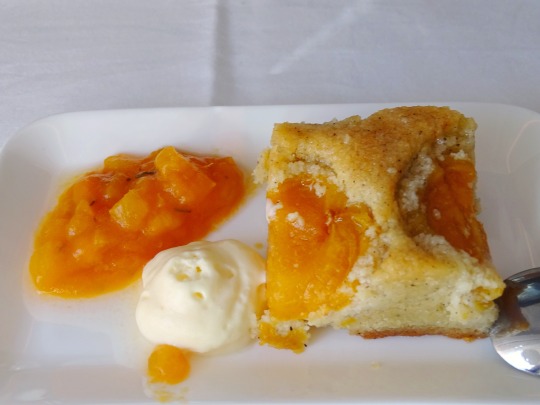


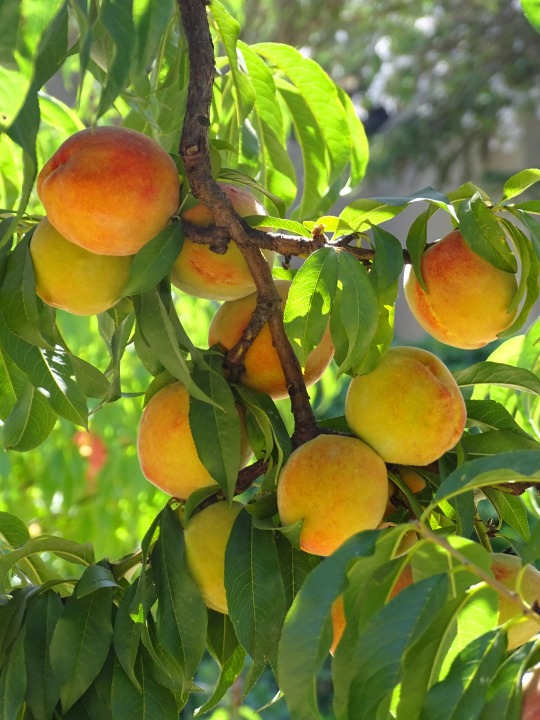

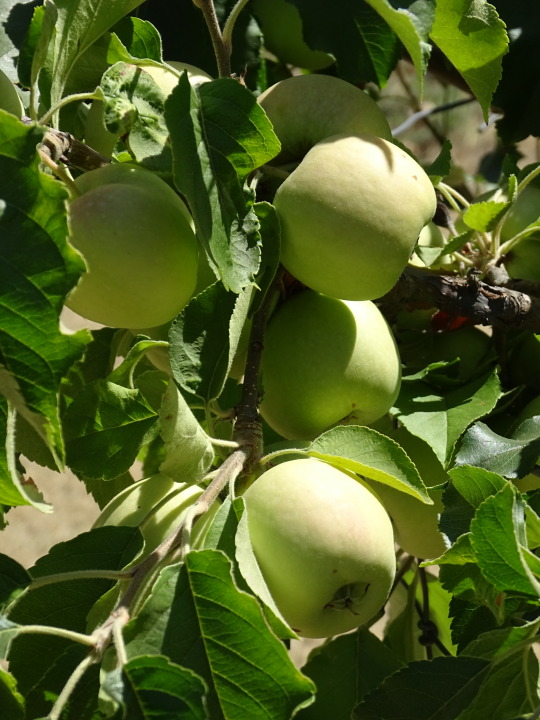







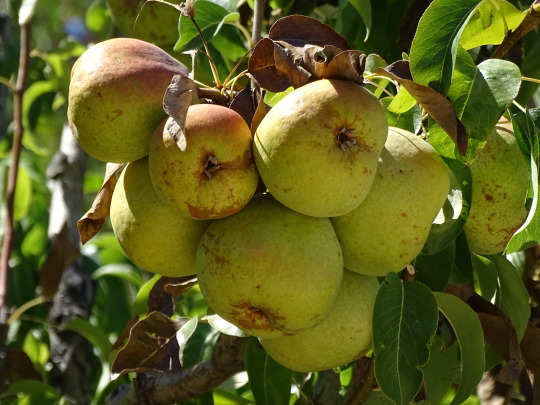





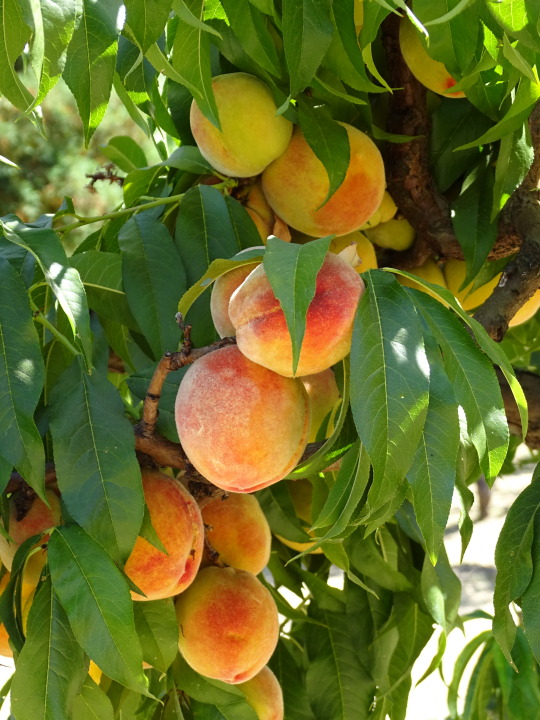





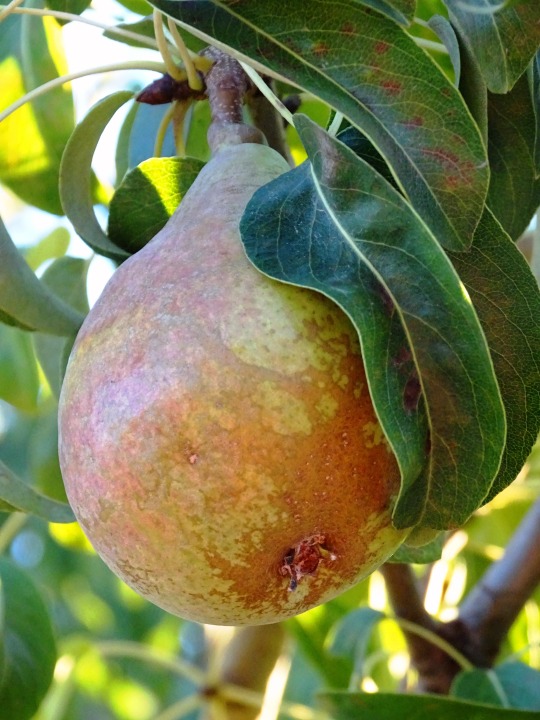
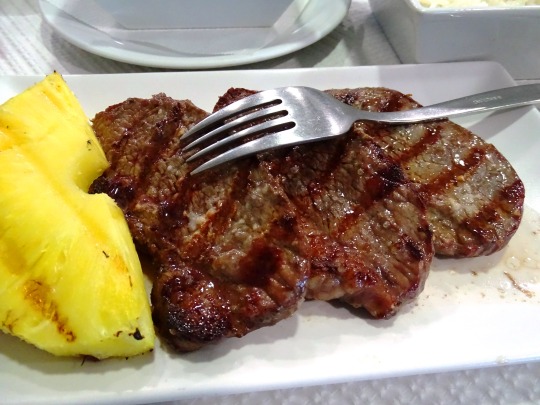
National Vitamin C Day
It’s good for your immune system, it’s good for your mental health, it’s even good for your skin. Don’t neglect this crucial vitamin on Vitamin C Day.
Vitamin C. We all hear about it, how good it is for us, how it will help us fight off that cold. But how much do we really know about this mystery substance, and just how much can it do to help our bodies? Take advantage of Vitamin C day to learn something new and boost your health, to boot!
Learn about National Vitamin C Day
National Vitamin C Day has been created so that we can appreciate and learn all about the different ways that vitamin C can benefit our health. Vitamin C is also referred to as ascorbate and ascorbic acid. It is found in a number of different foods, as well as being sold as a dietary supplement. It is an essential nutrient in terms of producing a number of neurotransmitters and repairing tissues. It was discovered back in 1912. Sixteen years later, it was isolated. Then, in 1933, it became the first vitamin to be produced chemically.
Vitamin C is widely recognized for helping to keep colds at bay. However, there are plenty of other benefits that are associated with this powerful vitamin! You could reduce your blood pressure by upping your vitamin C uptake, for example. Vitamin C is also beneficial in terms of helping to keep your skin healthy. This is because it protects it from the oxidative damage that is caused as a result of exposure on a daily basis to pollution, heat, and light. This has seen the population of vitamin C products increase considerably.
There are plenty of natural ways to add some more vitamin C to your diet. You don’t need to opt for vitamin C supplements, although many people do. Some of the fruits that have the highest sources of vitamin C include cantaloupe melon, citrus juices and fruits, kiwi fruit, pineapple, papaya, mango, and the various berries, such as cranberries, blueberries, raspberries, and strawberries. There are a number of vegetables that are rich in vitamin C as well, including cauliflower and broccoli.
The History of National Vitamin C Day
As a substance occurring naturally in countless different fruits and vegetables, vitamin C has likely been around as long as the earth itself. Peoples from all over the world have long been aware of the extensive health benefits of consuming foods high in vitamin C as well as the risks associated with not consuming enough of it, one of which is scurvy. It was not until the late 19th century that scurvy was described in detail by British physician Sir Thomas Barlow, that people began to understand just how much this substance can do for our health.
However, scurvy was known for thousands of years prior, with even the great Hippocrates himself writing about it. In the 18th century, it is assumed that the disease killed more British sailors than any enemies they had and was one of the greatest factors limiting maritime travel over the ages. Today, very few people suffer from scurvy and Vitamin C is considered on of the most important nutrients food can and should provide.
How to celebrate National Vitamin C Day
The best way to celebrate National Vitamin C Day is to stay healthy, and this very vitamin can help you with that! Vitamin C is necessary for good health and general well-being, but the unfortunate truth is that not everyone has the time to pay close attention to what they eat and just how many grams or milligrams of a certain substance they consume daily.
The drastic rise in popularity of microwavable dishes has caused people’s diets to become much less healthy over the recent years, as has the fact that many people are working longer hours than ever and don’t have the time or the energy to cook themselves and their families a well-balanced meal every day.
Luckily, there are a few ways to make sure you’re getting enough Vitamin C, no matter your lifestyle. One is to simply squeeze lemon juice into the water you drink. Half a lemon contains almost 100% of your daily vitamin C requirement, so just a squeeze here and there will be more than enough!
The same goes for—alcoholic drinks. If you’re going to have a few Mojitos this Friday anyway, why not use fresh lime juice? And have we mentioned Vitamin C helps prevent hangovers as well?
But it doesn’t stop there—as it tuns out, you can put lemon juice into pretty much everything for your daily dose of Vitamin C as well as a deliciously tangy zing. As opposed to some other “healthy” foods which, let’s face it, can be downright nasty (looking at you, kale!), lemon juice makes almost everything you put it on and in taste better.
Salad dressings. Grilled meats. The list goes on. And if for whatever reason you’re not a fan of lemons, don’t worry! Many fruits and vegetables contain enough Vitamin C to keep you healthy, including tomatoes, strawberries, spinach, peppers, and many more. Take advantage of National Vitamin C Day to do your body a favor!
Vitamin C cannot only be consumed, but it can be applied to your skin as well. As mentioned earlier, Vitamin C is great for skin health. Why not make your own Vitamin C serum? It is not as difficult as you may think! All you need is some aloe vera gel, filtered water, and vitamin C powder. You may decide to add some other vitamins as well, such as vitamin E oil. There are some variations of how to make vitamin C serums and facemasks online, but the ingredient list is a simple one, yet the benefits are vast!
Of course, you can also buy some vitamin C skin products, rather than making your own. If you are going to use a vitamin C serum, whether homemade or not, we recommend washing your face first and using a toner. You can then apply a small amount of the serum. The serum is probably going to be quite thick. Do this before you go to bed, and add another layer of moisturizer. In the morning, you should wash your face thoroughly before any makeup is applied. Because of sun exposure, vitamin C serum is not designed to be used on a daily basis.
Make sure you spread the word about National Vitamin C Day and the benefits associated with this nutrient so that you can help others experience the benefits of it!
Source
#seaberry and hazelnut mousse#lime tree#grape#National Vitamin C Day#VitaminCDay#4 April#flora#nature#original photography#strawberry#Beringer Vineyards#peach#USA#Spain#Sweden#food#Lemon Semifreddo#fruit#lemon#orange#apple#pear#travel#vacation#tourist attraction#landmark#cityscape#Brix Restaurant and Gardens#apricot tarte#peach cobbler
10 notes
·
View notes
Text
Easy Homemade Face Masks with Multani Mitti: 10 Recipes

Multani Mitti, also known as Fuller's Earth, has been a trusted ingredient in skincare for centuries. Its natural absorbent and exfoliating properties make it ideal for various skin types, from oily and acne-prone to dry and sensitive. Creating homemade face masks with Multani Mitti allows you to harness its benefits in a cost-effective and natural way. Here, we explore 10 simple yet effective recipes that you can easily make at home for glowing, healthy skin.
1. Multani Mitti and Rose Water Mask
This classic combination is perfect for deep cleansing and toning. Mix 2 tablespoons of Multani Mitti with enough rose water to form a smooth paste. Apply evenly to your face, leave it on for 15-20 minutes, then rinse with lukewarm water. Rose water helps balance pH levels and soothes the skin. For the best quality, ensure you use Multani Mitti from a reputable Multani Mitti Manufacturer.
2. Multani Mitti and Honey Mask
Honey is a natural humectant that moisturizes and nourishes the skin. Blend 1 tablespoon of honey with 1 tablespoon of Multani Mitti until well combined. Apply the mixture to your face, let it sit for 20 minutes, then rinse off with water. This mask is great for hydrating dry skin and promoting a healthy glow. Using honey from a trusted source along with Multani Mitti from a certified Multani Mitti Manufacturer ensures the best results.
3. Multani Mitti and Yogurt Mask
Yogurt contains lactic acid, which gently exfoliates and brightens the skin. Combine 2 tablespoons of yogurt with 1 tablespoon of Multani Mitti to form a creamy paste. Apply it evenly on your face, leave it for 15-20 minutes, then rinse off with lukewarm water. This mask helps to improve skin texture and reduce blemishes. Always choose Multani Mitti from a reliable Multani Mitti Manufacturer for effective results.
4. Multani Mitti and Turmeric Mask
Turmeric is renowned for its anti-inflammatory and antiseptic properties. Mix 1 tablespoon of Multani Mitti with a pinch of turmeric powder and enough water to make a paste. Apply the mask to your face, avoiding the eye area, and leave it on for 15 minutes. Rinse off gently with water. This mask helps to brighten the complexion and reduce acne scars. Sourcing your Multani Mitti from a reputable Multani Mitti Manufacturer can enhance the benefits of this mask.
5. Multani Mitti and Aloe Vera Mask
Aloe vera soothes and hydrates the skin, making it ideal for sensitive and irritated skin. Mix 2 tablespoons of fresh aloe vera gel with 1 tablespoon of Multani Mitti until smooth. Apply the mask to your face, leave it on for 20 minutes, then rinse off with lukewarm water. This mask helps to calm inflammation and promote healing. Trust a certified Multani Mitti Manufacturer to provide high-quality Multani Mitti for your skincare needs.
6. Multani Mitti and Lemon Juice Mask
Lemon juice is rich in vitamin C, which helps to lighten dark spots and even out skin tone. Combine 1 tablespoon of Multani Mitti with 1 teaspoon of fresh lemon juice and a little water to form a paste. Apply the mask to your face, leave it on for 10-15 minutes, then rinse off with cool water. This mask is excellent for oily skin types. Ensure you use Multani Mitti from a trusted Multani Mitti Manufacturer for optimal results.
7. Multani Mitti and Papaya Mask
Papaya contains enzymes that exfoliate dead skin cells and promote skin renewal. Mash a few pieces of ripe papaya and mix 2 tablespoons of it with 1 tablespoon of Multani Mitti. Apply the mixture to your face, leave it on for 15-20 minutes, then rinse with lukewarm water. This mask helps to rejuvenate dull skin and improve its texture. For best results, use Multani Mitti from a certified Multani Mitti Manufacturer.
8. Multani Mitti and Sandalwood Powder Mask
Sandalwood powder has cooling and antimicrobial properties that soothe and cleanse the skin. Mix 1 tablespoon of Multani Mitti with 1 tablespoon of sandalwood powder and enough rose water to make a paste. Apply the mask evenly on your face, leave it on for 20 minutes, then rinse off with water. This mask helps to tighten pores and reduce oiliness. Trust a reputable Multani Mitti Manufacturer for high-quality ingredients.
9. Multani Mitti and Cucumber Mask
Cucumber hydrates and refreshes the skin, making it perfect for hot summer days. Blend half a cucumber and mix it with 2 tablespoons of Multani Mitti until smooth. Apply the mixture to your face, leave it on for 15 minutes, then rinse off with cool water. This mask helps to soothe sunburns and reduce puffiness. Always choose Multani Mitti from a reliable Multani Mitti Manufacturer for effective skincare.
10. Multani Mitti and Gram Flour Mask
Gram flour, or besan, absorbs excess oil and helps to cleanse the skin deeply. Mix 2 tablespoons of gram flour with 1 tablespoon of Multani Mitti and enough yogurt to make a paste. Apply the mask to your face, leave it on for 15-20 minutes, then rinse off with lukewarm water. This mask is excellent for controlling acne and brightening the complexion. Ensure you use Multani Mitti from a trusted Multani Mitti Manufacturer for optimal results.
Each of these homemade face masks with Multani Mitti offers unique benefits for your skin. Whether you're looking to combat acne, hydrate dry skin, or achieve a brighter complexion, these natural recipes provide a gentle yet effective solution. Incorporate them into your skincare routine regularly to enjoy healthy, glowing skin without harsh chemicals or expensive treatments.
For high-quality Multani Mitti and other skincare essentials, trust Sangi International, a leading Multani Mitti Manufacturer. We are committed to providing natural products that enhance your beauty regimen. Visit our website to explore our range of skincare solutions and discover the perfect ingredients for your glowing skin.
2 notes
·
View notes
Text
Superfoods in Indian Diet; right from your kitchen
One of the best things about living in India is its food and the culinary heritage that we experience in every meal that we consume. No wonder; back in medieval times, India was the world’s most sought-after country due to its treasure of spices, hidden from the rest of the world. To the present day, the culinary diversity that we find in India cannot be found anywhere else in the world. However, despite having a plethora of food options that are readily and easily available, we often find ourselves purchasing inexpensive, imported alternatives.
There is a long list of food items that are so affordable that they can be found in every Indian household, yet they are inexpensive and often a luxury overseas, such as in the US. The list includes spices such as turmeric, cardamom, and ashwagandha (15x more expensive), grains such as millets and black gram (10x more expensive), and fruits and vegetables such as guava and jackfruit (20x more expensive). Without waiting any further, let’s learn about the Desi superfoods that you can add to your diet based on their affordability and availability.
Everyday Nutritional Powerhouses: Here, we will talk about the superfoods that are not only affordable but also readily available in our households.
Dal (lentils): Packed with some protein, fiber, and many essential minerals, dal is indeed a staple for a reason. You can explore diverse varieties like moong, masoor, tur, urad, and more for different nutritional benefits.
Leafy Greens: Do not try to underestimate the power of palak (spinach), methi (fenugreek), and sarson (mustard greens). Not only are these loaded with vitamins, minerals, and antioxidants, but they also boost your immunity in the chilling winter season.
Seasonal Fruits: Embrace the abundance of papaya, bananas, guavas, and oranges to fuel your body with vitamins and natural sugars.
Spices: We might know them as spices that add flavor to our meals; spices such as turmeric, ginger, garlic, and chili peppers are more than just flavor enhancers. They are anti-inflammatory powerhouses with many health benefits, such as regulating blood pressure and playing a major role in the prevention and treatment of various cancer types.
Yogurt: It is a natural source of probiotics for gut health, calcium for strong bones, and protein for muscle development. It can be consumed plain, flavored, or even with fruits.
Nourishing Yet Special: This category will include superfoods that are not as easily found in households like the ones mentioned above, yet they are hidden gems that carry more nutrients than you can take.
Millets: Ragi (finger millet), bajra (pearl millet), and jowar (sorghum) are some of the gluten-free grains that are rich in protein, fiber, and certain micronutrients. They’re most commonly used in rotis, dosas, or porridge.
Nuts & Seeds: Chia seeds, flaxseeds, and pumpkin seeds are packed with nutrients such as omega-3 fatty acids, essential minerals, and protein. You can soak them in water overnight before consuming them or directly sprinkle the seeds on your salads, yogurt, or porridge.
Amla (Indian Gooseberry): One of our top favorite superfoods, amla is a vitamin C powerhouse that boosts immunity, aids in digestion, and comes with anti-inflammatory properties. You can enjoy it raw, pickled, or in the form of juice.
Coconut: Another superfood like the Indian gooseberry, coconut water is the hub of electrolytes, while its flesh has healthy fats and fiber. While it grows in the south, coconut can be found easily in the northern regions of India. Although it is mostly consumed raw, coconut’s nectar and flesh also make it a key ingredient in various South Indian dishes.
Jackfruit: This versatile vegetable can be enjoyed unripe or ripe. Ripe jackfruit offers antioxidants and vitamins, while unripe jackfruit provides a meaty texture in vegetarian dishes.
Exquisite and Rare Nutritional Delights: Last but not least, this category will take you through some of the rare, expensive superfoods that are worth every penny that you spend on them.
Saffron: Found in the northernmost region of India, i.e., Kashmir, saffron adds a luxurious touch to many dishes and drinks while boasting anti-inflammatory and mood-boosting properties. Due to its scarcity, saffron is one of the most duplicated superfoods. Purchase saffron only from a reliable dealer.
Black Rice: A nutty-flavored rice rich in antioxidants and fiber and known for its longevity-promoting properties.
Ashwagandha: This powerful herb is an adaptogen that helps the body manage stress and improve stamina.
In the big picture, embracing India's diverse superfoods offers a treasure trove of health benefits while remaining kind to your wallet. From readily available lentils and greens to hidden gems like millets and amla, these culinary powerhouses pack a punch of nutrients without the hefty price tag of imported trends. So, explore the vibrant flavors of India, nourish your body with local abundance, and discover that superfoods don't have to be exotic or expensive.
To learn more about health and diet, follow us on https://freshwey.in/blogs/news
5 notes
·
View notes
Text
Top 10 Organic Juices to Reduce Acidity & Heartburn - HolyIndia

Acidity and heartburn are common digestive issues caused by excessive stomach acid production. Natural remedies like organic juices can help neutralize acidity and promote better digestion. Here are the top 10 organic juices that effectively reduce acidity and heartburn.
1. Organic Amla Juice
Organic Amla juice is a powerhouse of nutrients that helps balance stomach acid levels and improves digestion. It has alkaline properties that soothe the digestive tract and prevent acid reflux.
Benefits:
Neutralizes excess stomach acid
Reduces inflammation in the gut
Promotes better digestion
2. Aloe Vera Juice
Aloe vera juice has soothing and cooling properties that help relieve heartburn and acidity. It also aids in digestion and promotes gut health.
Benefits:
Forms a protective lining in the stomach
Reduces acid reflux symptoms
Enhances gut health
3. Coconut Water
Coconut water is rich in natural electrolytes and has an alkalizing effect on the stomach. It helps balance pH levels and prevents acid buildup.
Benefits:
Hydrates and soothes the stomach lining
Balances pH levels in the body
Provides essential minerals for digestion
4. Organic Noni Juice
Organic noni juice is a powerful detoxifying drink that helps in maintaining gut health and reducing acid reflux. It has anti-inflammatory properties that soothe the digestive tract.
Benefits:
Reduces stomach acidity naturally
Supports gut and digestive health
Enhances nutrient absorption
5. Ginger Juice
Ginger juice is well known for its anti-inflammatory and digestive benefits. It helps relax stomach muscles and reduces acid reflux symptoms.
Benefits:
Relieves bloating and indigestion
Reduces acid production
Supports healthy gut bacteria
6. Carrot Juice
Carrot juice is alkaline in nature and helps neutralize excess stomach acid. It is also rich in antioxidants that promote overall digestive health.
Benefits:
Provides essential vitamins and minerals
Helps maintain stomach pH balance
Aids in smooth digestion
7. Watermelon Juice
Watermelon juice is a natural coolant that soothes the stomach lining and prevents acid buildup. It is hydrating and rich in essential nutrients.
Benefits:
Reduces inflammation in the gut
Prevents acid reflux naturally
Supports hydration and digestion
8. Cucumber Juice
Cucumber juice is refreshing and alkaline, making it a great remedy for acidity. It hydrates the body and promotes healthy digestion.
Benefits:
Neutralizes stomach acid
Hydrates and detoxifies the digestive system
You can also visit this website to buy more Organic Juices
9. Papaya Juice
Papaya juice contains enzymes like papain, which aid in digestion and reduce acid reflux symptoms. It helps break down proteins for better nutrient absorption.
Benefits:
Aids digestion naturally
Reduces bloating and discomfort
Prevents acid reflux
10. Pineapple Juice
Pineapple juice contains bromelain, an enzyme that supports digestion and reduces acidity. It also has anti-inflammatory properties that promote gut health.
Benefits:
Helps in protein digestion
Prevents acid reflux
Reduces inflammation in the stomach
Conclusion
Incorporating these organic juices into your daily routine can help maintain a healthy digestive system and prevent acidity and heartburn. Choosing natural remedies like fresh juice can improve gut health and overall well-being.
FAQs
1. How often should I drink organic juices for acidity?It is recommended to drink a glass of fresh juice once or twice a day for best results.
2. Can I drink these juices on an empty stomach?Yes, drinking organic juice on an empty stomach can help detoxify your body and balance stomach acid levels.
3. Is organic amla juice better than regular amla juice?Yes, organic amla juice is free from preservatives and harmful chemicals, making it a healthier option.
4. Can organic noni juice be mixed with other juices?Yes, you can mix noni juice with other organic juices like aloe vera or coconut water for enhanced benefits.5. How long does it take to see results from drinking organic juices?Consistent consumption of organic juice for a few weeks can help improve digestion and reduce acidity effectively.
0 notes
Text
Papaya Leaf Tablets vs. Dengue: Separating Fact from Fiction

Papaya leaf tablets have surged in popularity as a complementary treatment for dengue fever, particularly for their purported ability to combat thrombocytopenia (low platelet count). This in-depth analysis separates evidence-based benefits from unproven claims, providing a clear roadmap for patients, caregivers, and healthcare professionals.
Understanding Dengue and Thrombocytopenia
Dengue fever, caused by the Aedes mosquito-borne dengue virus (DENV), affects 390 million people annually, with severe cases leading to hemorrhagic complications. A hallmark of dengue progression is thrombocytopenia, where platelet counts drop below 150,000/µL (normal range: 150,000–450,000/µL).
Key Dengue Stages:
Febrile Phase: High fever, headache, muscle pain (days 1–3).
Critical Phase: Plasma leakage, thrombocytopenia (days 4–7).
Recovery Phase: Stabilization of platelets and fluids (days 7–10).
Evidence-Based Benefits of Papaya Leaf Tablets
1. Platelet Count Improvement
Clinical trials demonstrate papaya leaf tablets accelerate platelet recovery in dengue patients:
2024 Pediatric Trial (n=285)
275–550 mg/day
89,739 → 168,922/µL (day 3–5)
4
Meta-Analysis (n=988)
550 mg 3x daily
+12.18 ×10³/µL (day 3)
7
Severe Case Report (2024)
Fresh leaf juice
12.1 → 122.7 ×10³/µL (48 hrs)
4
Mechanisms:
Enzyme Activation: Papain and carpaine stimulate megakaryocyte differentiation in bone marrow6.
Gene Upregulation: 15-fold increase in ALOX12 expression, critical for platelet formation4.
Antioxidant Protection: Quercetin and flavonoids reduce oxidative damage to platelets4.
2. Accelerated Clinical Recovery
Patients using papaya leaf formulations experience:
33% shorter hospital stays (4.3 vs. 7.4 days)7.
42% reduction in blood transfusions compared to standard care4.
1.5-day faster fever resolution6.
Debunking Common Myths
Myth
Reality
"Cures dengue infection"
Targets symptoms (thrombocytopenia), not the virus. No antiviral effect.
"Prevents all complications"
Reduces bleeding risk but doesn’t prevent shock or plasma leakage.
"Works within hours"
Platelet rise begins after 40–48 hours; no instant effect.
Clinical Usage Guidelines
Dosage Protocols
Group
Dosage
Duration
Adults
550 mg tablet, 3x daily
3–5 days
Children (1–5y)
275 mg syrup, 3x daily
3–5 days
Severe Cases
50g fresh leaf juice daily
Until recovery
Preparation Standards:
Commercial tablets: Standardized to 11 mg extract/dose4.
Avoid blends with artificial additives or unverified fillers.
Safety Profile and Limitations
Contraindications
Pregnancy: Uterine-stimulating alkaloids may trigger contractions4.
Liver/Kidney Disease: Limited safety data for chronic use.
Mixed Evidence
Positive Trials: 73% show significant platelet improvement (p<0.05)7.
Negative Trials: 27% report no difference vs. placebo, particularly in late-stage dengue4.
Clinical Debate: A 12 ×10³/µL platelet rise may not prevent hemorrhage in severe cases7.
Comparative Analysis: Tablets vs. Alternatives
Treatment
Platelet Increase
Cost (USD)
Ease of Use
Papaya Leaf Tablets
+12–13 ×10³/µL
$15–$30
High
Fresh Leaf Juice
+10–12 ×10³/µL
$5–$10
Moderate
Standard Care Only
+8–10 ×10³/µL
$100–$500
N/A
Key Takeaway: Tablets offer standardized dosing but lack the cost-effectiveness of fresh juice.
Future Research Directions
Viral Load Studies: Does papaya leaf extract reduce DENV replication?
Severe Dengue Trials: Efficacy in hemorrhagic shock cases.
Long-Term Safety: Impact on liver enzymes and renal function.
FAQ: Papaya Leaf Tablets and Dengue
Q: Can I replace hospitalization with papaya tablets?
A: No. They’re adjuncts—not substitutes—for fluid therapy and monitoring.
Q: Do all brands work equally well?
A: Opt for GMP-certified brands with third-party lab testing (e.g., Herbal Hills, Kerala Ayurveda).
Q: How soon should I start taking them?
A: Begin at first dengue symptoms (fever, rash) for optimal effect.
Conclusion
Papaya leaf tablets demonstrate statistically significant platelet-boosting effects in early-stage dengue, supported by RCTs and meta-analyses. However, they’re not a cure-all, and standard medical care remains essential. Patients should consult healthcare providers before use, especially high-risk groups like pregnant women.
0 notes
Text
Best Fruits and Vegetables for a Jaundice Diet: Top 10 Picks
When you're diagnosed with jaundice, the body’s liver function is impaired, leading to a buildup of bilirubin in the bloodstream. This results in the characteristic yellowing of the skin and eyes. While medical treatment is essential, proper nutrition can play a significant role in managing jaundice and aiding in recovery. A jaundice diet chart can help guide what to eat and what to avoid, focusing on foods that support liver health, promote detoxification, and prevent further strain on the liver. Among the many aspects of a jaundice diet, fruits and vegetables are particularly important. They provide vital nutrients, antioxidants, and hydration, which can assist in liver regeneration and boost overall health.

So, if you or someone you know is suffering from jaundice, it’s crucial to incorporate certain fruits and vegetables that are known to help the liver function properly. In this blog, we’ll discuss the top 10 fruits and vegetables you should include in a jaundice food to eat list. These foods support liver detoxification, reduce inflammation, and help speed up the recovery process.
1. Lemon
Lemon is an excellent fruit to include in your jaundice diet chart. Rich in vitamin C, antioxidants, and pectin, lemons help stimulate the liver to produce bile, a fluid that aids in digestion and detoxification. Vitamin C is also a powerful antioxidant that can combat the oxidative stress that often accompanies jaundice. Consuming lemon water or adding fresh lemon juice to your meals can help alkalize the body and promote detoxification.
2. Papaya
Papaya is a highly beneficial fruit for people with jaundice due to its high enzyme content, specifically papain, which helps in the digestion of proteins. It is also rich in vitamins A and C, which support liver function and overall immune health. Papaya’s high fiber content ensures smooth digestion and bowel movements, which is essential for people with jaundice as they may struggle with digestion due to impaired liver function. Additionally, it has anti-inflammatory properties that may reduce the inflammation caused by liver disease.
3. Carrot
Carrots are an excellent vegetable to include in a jaundice food to eat list. Rich in beta-carotene, which the body converts into vitamin A, carrots help in detoxifying the liver and improving its function. Vitamin A plays a significant role in cell regeneration and supports the liver's natural detoxification processes. Carrots are also packed with fiber, which promotes healthy digestion and prevents constipation, a common issue faced by those suffering from jaundice.
4. Spinach
Spinach is a highly nutritious vegetable that can benefit anyone following a jaundice diet chart. It is rich in chlorophyll, which helps to detoxify the liver and improve its function. Chlorophyll has been shown to reduce the toxic burden on the liver, assisting in the detoxification of harmful substances and promoting healthy liver enzymes. Spinach is also a good source of vitamins A, C, and K, which are essential for liver health, as well as iron and folate, which help to boost overall energy levels and immunity.
5. Beetroot
Beetroot is a powerful vegetable that plays an important role in cleansing the liver. It contains betaine, a compound that supports liver function and helps in the detoxification process. Betaine has been shown to improve liver function by reducing the accumulation of fat in the liver, making it especially beneficial for individuals with fatty liver disease, a condition often associated with jaundice. Beets are also rich in antioxidants, vitamins, and minerals that help reduce inflammation and promote healthy liver cells.
6. Cucumber
Cucumber is an excellent hydrating vegetable that can be included in the jaundice diet chart. It has high water content, which helps in keeping the body hydrated and flushing out toxins from the liver. Proper hydration is essential for the liver to function efficiently, and cucumber can help maintain the body's fluid balance. Cucumbers are also rich in antioxidants and contain a good amount of vitamin K, which is essential for maintaining healthy liver function.
7. Avocado
Avocado is another beneficial fruit for people with jaundice. It is rich in healthy monounsaturated fats, which are essential for liver health. These healthy fats help reduce inflammation and support the liver’s detoxification processes. Avocados are also packed with antioxidants, including vitamin E, which helps protect the liver from oxidative stress. Additionally, they contain glutathione, a powerful antioxidant that plays a vital role in detoxifying the liver and removing harmful toxins from the body.
8. Apple
Apples are high in fiber, antioxidants, and vitamin C, making them an excellent addition to any jaundice diet. The fiber in apples helps in promoting proper digestion and bowel movement, which is important for liver detoxification. Apples contain pectin, a type of soluble fiber that helps in removing toxins from the body and reducing the burden on the liver. The high antioxidant content of apples also supports liver function by combating free radical damage and reducing inflammation.
9. Garlic
Garlic, a natural herb, is widely known for its many health benefits, particularly for liver health. It contains sulfur compounds like allicin, which have been shown to support liver detoxification and improve liver function. Garlic also has anti-inflammatory and antimicrobial properties, which help reduce inflammation in the liver and promote the healing process. Additionally, garlic stimulates the production of bile, aiding in the breakdown of fats and improving digestion, which is essential for individuals with jaundice.
10. Tomatoes
Tomatoes are rich in antioxidants, particularly lycopene, which has been shown to protect the liver from oxidative damage and reduce inflammation. Lycopene is known to improve liver function by neutralizing harmful free radicals that can damage liver cells. Tomatoes also contain vitamin C, potassium, and fiber, which contribute to overall health and help in maintaining proper liver function. Including tomatoes in your meals can support detoxification and promote healthy digestion.
Final Thoughts
The foods mentioned in this list can be incredibly helpful in managing jaundice and supporting liver recovery. By including these fruits and vegetables in your daily diet, you can promote detoxification, reduce inflammation, and support overall liver health. However, it’s important to remember that a jaundice diet chart should be individualized based on your specific health condition and under the guidance of a healthcare professional. Consuming a balanced diet rich in nutrient-dense fruits and vegetables is key to improving liver health and accelerating recovery from jaundice.
Always consult your doctor or a dietitian before making any significant changes to your diet, especially if you have any underlying health conditions or if your jaundice is related to other serious liver diseases. By following the right diet, alongside proper medical care, you can boost your recovery and support your liver in its healing process.
#jaundice#jaundice diet#health & fitness#jaundice diet chart#foods to avoid in jaundice#jaundice food to eat
0 notes
Text
How to Make Healthy and Delicious Frozen Fruit Smoothies at Home
Are you craving a refreshing, nutritious drink that satisfies your sweet tooth without the guilt? Look no further than frozen fruit smoothies! These tasty blends are packed with essential vitamins, minerals, and fiber, making them a healthy choice for breakfast, a snack, or even a post-workout boost. And the best part? You can easily make them at home! If you've ever wondered how to create a smoothie that tastes like a treat but is also good for you, you're in the right place.

Why Choose Frozen Fruit for Smoothies?
Frozen Fruits World is the star of the show when it comes to making smoothies. Not only does it give your drink a refreshingly cold texture, but it also helps you avoid the need for ice, which can dilute the flavor. Plus, using frozen fruit can extend the shelf life of your produce, allowing you to enjoy seasonal fruits all year round.
But that’s not all. Frozen fruits retain almost all their nutrients, making them just as nutritious as fresh ones. So, whether you’re using frozen strawberries, mangoes, or mixed berries, you’re still packing in the vitamins, antioxidants, and fiber that your body needs.
The Essentials: What You Need to Make a Smoothie
Making a smoothie at home is simple, and the best part is that you likely already have many of the ingredients on hand. Here's what you'll need:
Frozen fruits – your smoothie’s foundation.
Liquid base – such as milk (dairy or plant-based), fruit juice, or yogurt.
Optional add-ins – protein powder, nut butter, greens, chia seeds, etc.
Sweetener (optional) – honey, agave, or stevia.
Blender – the key to turning your ingredients into a creamy smoothie.
With these basic ingredients, you can create a variety of smoothies that are both healthy and delicious.
Step-by-Step Guide to Making the Perfect Frozen Fruit Smoothie
Making a frozen fruit smoothie is as easy as blending everything together. Follow these simple steps:
Add liquid to the blender – Start with about one cup of liquid.
Toss in the frozen fruit – Add about 1-2 cups of frozen fruit to the blender.
Add optional ingredients – This can include protein powder, greens, or any extras for a nutrient boost.
Blend until smooth – Start on low and gradually increase the speed to ensure everything blends evenly.
Taste and adjust – Add sweetener or extra liquid if needed, and blend again.
Voila! You’ve got yourself a nutritious, refreshing smoothie in minutes.
Choosing the Right Frozen Fruit
The beauty of frozen fruit smoothies is that you can mix and match flavors to create something unique. Some popular frozen fruits include:
Berries – strawberries, blueberries, raspberries, blackberries.
Tropical fruits – mango, pineapple, papaya.
Stone fruits – peaches, cherries, apricots.
Bananas – frozen bananas add a creamy texture and sweetness.
Experimenting with different fruit combinations will keep your smoothies exciting and delicious. Don’t be afraid to try new flavors, like combining pineapple and spinach for a tropical green smoothie!
Balancing Your Smoothie: The Right Mix of Ingredients
While fruits form the base of your smoothie, the magic happens when you balance the other ingredients. Consider adding:
Healthy fats like avocado or coconut oil for creaminess and energy.
Fiber-rich ingredients like chia seeds or oats to keep you full longer.
Leafy greens like spinach or kale for an extra nutritional punch.
Finding the right balance of ingredients will not only make your smoothie tastier but will also boost its health benefits.
Adding Protein: Boosting Your Smoothie’s Nutritional Value
If you’re looking for a post-workout recovery drink or want to make your smoothie more filling, adding protein is a great option. Some easy ways to incorporate protein include:
Greek yogurt – rich in protein and probiotics.
Protein powder – choose a plant-based or whey protein.
Nut butters – peanut butter, almond butter, or cashew butter.
Protein helps build and repair muscle, making it a great addition for anyone looking to support their fitness goals.
Sweetening Your Smoothie Without Added Sugar
One of the biggest pitfalls when making smoothies is the temptation to load them up with sugar. But fear not—you can still satisfy your sweet tooth without adding processed sugar. Try these natural sweeteners:
Bananas – naturally sweet and creamy.
Dates – provide a caramel-like sweetness.
Honey or agave syrup – small amounts can add a subtle sweetness.
By using these natural alternatives, you can keep your smoothies healthy without sacrificing flavor.
How to Make Your Smoothie Creamier and Thicker
A smooth, creamy texture is key to a satisfying smoothie. If you want to make your smoothie thicker, consider these tricks:
Frozen bananas – they add both thickness and sweetness.
Greek yogurt – adds creaminess without excess sugar.
Chia seeds – they absorb liquid and expand, making your smoothie thicker.
The creamier, the better, right?
Tips for the Best Smoothie Texture
Achieving the perfect smoothie texture requires a little technique. Here are a few pro tips:
Layer your ingredients – Add liquids first, followed by soft ingredients like yogurt or protein powder, and top with frozen fruits. This ensures even blending.
Blend in stages – Start by blending the liquids and softer ingredients, then add the frozen fruit to prevent the blender from getting stuck.
Perfecting your smoothie texture will elevate your smoothie game.
Storing and Freezing Fresh Fruits for Future Smoothies
Don’t let your fresh fruits go to waste! You can easily freeze fresh fruits to make smoothies later. Here’s how:
Wash and peel the fruit.
Slice it into smaller pieces (helps with blending).
Lay the fruit flat on a baking sheet and freeze for 2 hours.
Transfer the frozen fruit into an airtight bag or container.
This method helps preserve the flavor and nutrients of your fruits, so they’re ready whenever you need them.
Fun Variations and Flavor Combinations to Try
The possibilities for smoothie combinations are endless! Here are some fun ideas to get you started:
Tropical Delight: Mango, pineapple, coconut milk.
Berry Blast: Blueberries, strawberries, banana, almond milk.
Green Machine: Spinach, banana, avocado, chia seeds, almond milk.
Feel free to get creative with your smoothies. After all, it’s your personal blend of healthy goodness!
Smoothies for Different Diets: Vegan, Gluten-Free, and More
Whether you’re following a vegan, gluten-free, or low-carb diet, smoothies can be easily adapted to meet your needs. Simply swap in plant-based milk for dairy, use gluten-free oats, or add sugar-free protein powder.
A healthy smoothie can fit into any lifestyle!
How to Make Smoothies Kid-Friendly
Kids can be picky eaters, but smoothies are an easy way to sneak in some nutrition. Try adding fruits they already love, like bananas and strawberries, and make the smoothie extra fun by letting them help blend the ingredients. Adding a spoonful of peanut butter or a drizzle of honey can make the drink even more appealing.
Common Mistakes to Avoid When Making Smoothies
To ensure your smoothie turns out perfect every time, avoid these common mistakes:
Using too much liquid – this can make your smoothie too runny.
Not blending enough – make sure everything is fully mixed for a smooth texture.
Overloading with sugar – stick to natural sweeteners.
By avoiding these mistakes, you’ll be blending smoothies like a pro!
Conclusion: Sip Your Way to Better Health
Frozen fruit smoothies are a quick, easy, and delicious way to boost your nutrition. By following these simple tips and tricks, you’ll be able to enjoy healthy, homemade smoothies in no time. Whether you’re looking for a refreshing snack or a nutritious meal replacement, smoothies are the perfect way to fuel your day.
0 notes
Text
5 Irresistible Fruit Salad Recipes Kids Will Love
A fruit salad is a delightful way to encourage kids to eat more fruits. Packed with natural sweetness, vibrant colors, and essential nutrients, fruit salads make an excellent addition to snacks, meals, or party menus. These recipes combine creativity and flavor to ensure they are both nutritious and enjoyable for kids.
Classic Rainbow Fruit Salad
This timeless recipe is both appealing and easy to make. Dice strawberries, kiwi, blueberries, mango, and pineapple into small pieces. Toss them gently with a drizzle of honey and a squeeze of lime juice.
The mix of colors and natural sweetness makes this salad a favorite. To make it even more exciting, use a fruit and vegetable cutter to create fun shapes like stars or hearts. Kids will enjoy the creative presentation as much as the taste.

Berry Bliss Salad
Berries are naturally sweet and packed with antioxidants, making them a hit with kids. Combine strawberries, raspberries, blueberries, and blackberries in a bowl. Add a handful of seedless grapes to enhance the texture.
Prepare a simple dressing using plain yogurt and a touch of maple syrup. Toss the mixture until well-coated. This salad is perfect for breakfast or a mid-day snack, offering a delicious combination of flavors and health benefits.
Tropical Paradise Fruit Mix
Introduce kids to the flavors of the tropics with this refreshing salad. Mix diced mango, pineapple, papaya, and banana in a bowl. Sprinkle shredded coconut on top and add a splash of orange juice for extra zest.
Serve this salad chilled for a summer treat that kids will find irresistible. Tropical fruits are rich in vitamins and provide a unique taste experience. This salad is perfect for outdoor gatherings or family picnics.
Watermelon and Mint Medley
Watermelon is naturally hydrating and a favorite among children. For this recipe, dice fresh watermelon and combine it with diced cucumber for a crisp texture. Add a few mint leaves for a refreshing flavor.
Sprinkle a pinch of salt and drizzle with a squeeze of lemon juice. This salad is light, easy to prepare, and perfect for hot days. It can also be served as a side dish during summer barbecues or pool parties.
Apple and Grape Delight
This quick and simple salad is perfect for busy days. Dice apples into bite-sized pieces and combine them with halved seedless grapes. To prevent the apples from browning, toss them in a bit of lemon juice. Add crushed walnuts or a sprinkle of cinnamon to enhance the flavor. This salad works well as an after-school snack or a healthy dessert. Its crunchy texture and sweet taste make it a hit with kids of all ages.
Pro Tips for Preparing Kid-Friendly Fruit Salads
Choose Fresh Fruits: Always opt for fresh, seasonal fruits to maximize flavor and nutrition.
Get Creative with Shapes: Cutting fruits into fun shapes adds excitement and encourages kids to eat.
Limit Added Sweeteners: Use natural sweeteners like honey or fruit juices instead of sugar.
Serve Immediately: Fruit salads taste best when served fresh to maintain their vibrant colors and textures.
Why Fruit Salads are a Great Choice for Kids?
Fruit salads are not only delicious but also packed with vitamins, minerals, and fiber essential for growing children. These recipes introduce kids to a variety of flavors and textures, helping to expand their palates. Moreover, the natural sweetness of fruits makes them a healthier alternative to sugary snacks and desserts.
Encouraging children to enjoy fruit salads fosters healthy eating habits from an early age. They are also a fantastic way to involve kids in the kitchen. Letting them help with preparation can make the experience fun and rewarding.
Final Thoughts
These five fruit salad recipes are simple, healthy, and designed to delight kids. Whether served as a snack, dessert, or party treat, they provide a colorful and nutritious way to include fruits in a child’s diet. Each recipe is easy to customize based on preferences and available ingredients.
With a little creativity, fruit salads can transform into exciting dishes that kids will love and look forward to eating.
0 notes
Text
How Can Papaya Leaves Benefit Your Immune System?
When it comes to natural remedies, papaya leaves are becoming popular for their many health benefits, especially in supporting and enhancing immune function. Rich in essential nutrients, antioxidants, and unique plant compounds, papaya leaves have been used in traditional medicine for centuries.
Here are the health benefits of papaya leaves in detail, especially how they can strengthen your immune system.

1. Rich in Antioxidants to Fight Free Radicals
Papaya leaves contain powerful antioxidants, including flavonoids, tannins, and beta-carotene. These compounds play an important role in neutralizing harmful free radicals in the body. Free radicals are unstable molecules that can damage cells and weaken the immune system, leading to chronic diseases and faster aging. By consuming papaya leaf tea or extract, you can protect your body from oxidative stress, thereby supporting overall immune health.
2. Vitamin C for Better Immunity
One of the most impressive health benefits of papaya leaves is the high amount of vitamin C they contain. Vitamin C is essential for the immune system, as it helps white blood cells function more effectively and strengthens the skin’s defense system. By regularly consuming papaya leaf extract, you are giving your immune system a much-needed boost, helping it fight infections more effectively.
3. Supports Blood Platelet Production
Papaya leaf extract is often used to support blood platelet production, which is especially beneficial for individuals recovering from viral infections such as dengue fever. Dengue fever can cause a significant drop in platelet count, which can lead to complications. Studies have shown that papaya leaf juice can naturally increase platelet count, leading to faster recovery and enhanced immune response. While this benefit has drawn particular attention in areas prone to mosquito-borne diseases, it highlights the leaf’s role in immune support.
4. Contains immunomodulatory compounds
Papaya leaves contain unique compounds such as papain and chymopapain, which have strong immunomodulatory effects. These compounds help regulate the immune system, ensuring that it does not overreact or underreact to infections. This regulation is important, as an overactive immune response can lead to autoimmune disorders, while a weakened response makes you vulnerable to infections. By balancing immune activity, papaya leaves may contribute to a healthier and more resilient immune system.
5. Antibacterial and antifungal properties
Papaya leaf extracts are known for their antibacterial and antifungal properties, thanks to their rich phytochemical content. These natural properties help the body fight harmful bacteria and fungi, reducing the risk of infection. Regularly consuming papaya leaf tea or supplements can support your body's natural defense system, especially during cold and flu season.
6. Makes the body alkaline
The body's acidic environment is often associated with low immunity and inflammation. Papaya leaves help make the body alkaline, creating an environment less favorable for illness. An alkaline body environment supports immune function, as it promotes optimal cellular processes and improves nutrient absorption. Adding papaya leaves to your diet can be an easy and effective way to maintain your body's pH balance and improve immune health.
You should also know the Papaya leaves benefits for skin
How to Use Papaya Leaves for Immune Support
There are many ways to incorporate papaya leaves into your routine to enjoy the immune-boosting benefits:
Papaya leaf tea: Steep dried or fresh papaya leaves in hot water to make tea.
Papaya leaf juice: Extract fresh juice from papaya leaves and consume in small doses.
Supplements: Papaya leaf extract supplements are available in capsule form, making it convenient to get a concentrated dose of the leaves’ nutrients.
Safety Considerations
While papaya leaves offer numerous health benefits, consult a healthcare professional before adding them to your diet, especially if you are pregnant, breastfeeding, or suffering from any medical conditions. Some individuals may experience mild stomach discomfort, so it’s wise to start with a small dose to assess tolerability.
Conclusion
Incorporating papaya leaves into your wellness routine can be a great way to boost your immune system naturally. From powerful antioxidants and immune-regulating compounds to antibacterial and alkaline properties, the health benefits of papaya leaves make them a valuable addition to a balanced diet. Whether you choose papaya leaf tea or supplements, these leaves can play a helpful role in maintaining a healthy and resilient immune system, helping you stay healthy year-round.
#health benefits of papaya leaves#papaya leaves for immunity#natural immune boosters#benefits of papaya leaf tea#papaya leaves for immune system#antioxidant-rich foods#natural remedies for better immunity#papaya leaf juice benefits
0 notes
Photo





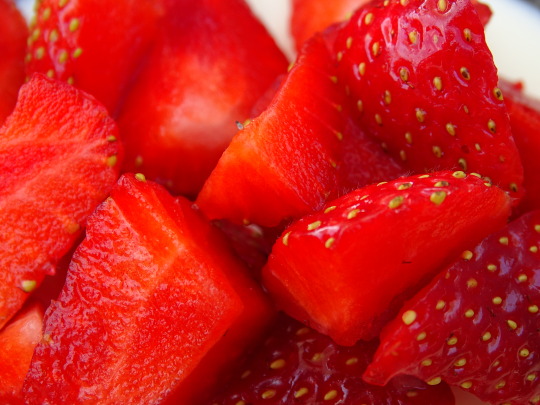
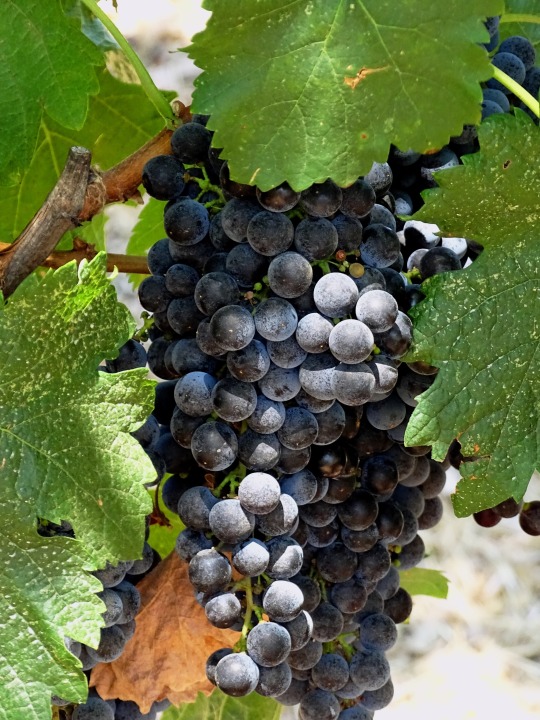

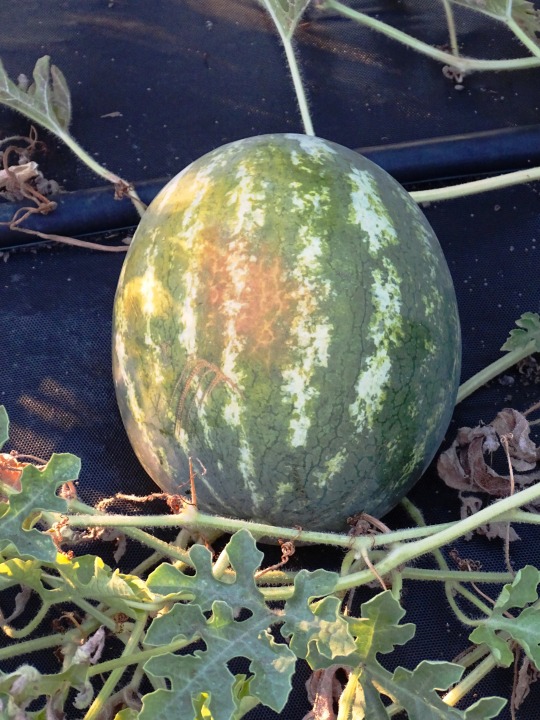

National Vitamin C Day
It’s good for your immune system, it’s good for your mental health, it’s even good for your skin. Don’t neglect this crucial vitamin on Vitamin C Day.
Vitamin C. We all hear about it, how good it is for us, how it will help us fight off that cold. But how much do we really know about this mystery substance, and just how much can it do to help our bodies? Take advantage of Vitamin C day to learn something new and boost your health, to boot!
Learn about National Vitamin C Day
National Vitamin C Day has been created so that we can appreciate and learn all about the different ways that vitamin C can benefit our health. Vitamin C is also referred to as ascorbate and ascorbic acid. It is found in a number of different foods, as well as being sold as a dietary supplement. It is an essential nutrient in terms of producing a number of neurotransmitters and repairing tissues. It was discovered back in 1912. Sixteen years later, it was isolated. Then, in 1933, it became the first vitamin to be produced chemically.
Vitamin C is widely recognized for helping to keep colds at bay. However, there are plenty of other benefits that are associated with this powerful vitamin! You could reduce your blood pressure by upping your vitamin C uptake, for example. Vitamin C is also beneficial in terms of helping to keep your skin healthy. This is because it protects it from the oxidative damage that is caused as a result of exposure on a daily basis to pollution, heat, and light. This has seen the population of vitamin C products increase considerably.
There are plenty of natural ways to add some more vitamin C to your diet. You don’t need to opt for vitamin C supplements, although many people do. Some of the fruits that have the highest sources of vitamin C include cantaloupe melon, citrus juices and fruits, kiwi fruit, pineapple, papaya, mango, and the various berries, such as cranberries, blueberries, raspberries, and strawberries. There are a number of vegetables that are rich in vitamin C as well, including cauliflower and broccoli.
The History of National Vitamin C Day
As a substance occurring naturally in countless different fruits and vegetables, vitamin C has likely been around as long as the earth itself. Peoples from all over the world have long been aware of the extensive health benefits of consuming foods high in vitamin C as well as the risks associated with not consuming enough of it, one of which is scurvy. It was not until the late 19th century that scurvy was described in detail by British physician Sir Thomas Barlow, that people began to understand just how much this substance can do for our health.
However, scurvy was known for thousands of years prior, with even the great Hippocrates himself writing about it. In the 18th century, it is assumed that the disease killed more British sailors than any enemies they had and was one of the greatest factors limiting maritime travel over the ages. Today, very few people suffer from scurvy and Vitamin C is considered on of the most important nutrients food can and should provide.
How to celebrate National Vitamin C Day
The best way to celebrate National Vitamin C Day is to stay healthy, and this very vitamin can help you with that! Vitamin C is necessary for good health and general well-being, but the unfortunate truth is that not everyone has the time to pay close attention to what they eat and just how many grams or milligrams of a certain substance they consume daily.
The drastic rise in popularity of microwavable dishes has caused people’s diets to become much less healthy over the recent years, as has the fact that many people are working longer hours than ever and don’t have the time or the energy to cook themselves and their families a well-balanced meal every day.
Luckily, there are a few ways to make sure you’re getting enough Vitamin C, no matter your lifestyle. One is to simply squeeze lemon juice into the water you drink. Half a lemon contains almost 100% of your daily vitamin C requirement, so just a squeeze here and there will be more than enough!
The same goes for—alcoholic drinks. If you’re going to have a few Mojitos this Friday anyway, why not use fresh lime juice? And have we mentioned Vitamin C helps prevent hangovers as well?
But it doesn’t stop there—as it tuns out, you can put lemon juice into pretty much everything for your daily dose of Vitamin C as well as a deliciously tangy zing. As opposed to some other “healthy” foods which, let’s face it, can be downright nasty (looking at you, kale!), lemon juice makes almost everything you put it on and in taste better.
Salad dressings. Grilled meats. The list goes on. And if for whatever reason you’re not a fan of lemons, don’t worry! Many fruits and vegetables contain enough Vitamin C to keep you healthy, including tomatoes, strawberries, spinach, peppers, and many more. Take advantage of National Vitamin C Day to do your body a favor!
Vitamin C cannot only be consumed, but it can be applied to your skin as well. As mentioned earlier, Vitamin C is great for skin health. Why not make your own Vitamin C serum? It is not as difficult as you may think! All you need is some aloe vera gel, filtered water, and vitamin C powder. You may decide to add some other vitamins as well, such as vitamin E oil. There are some variations of how to make vitamin C serums and facemasks online, but the ingredient list is a simple one, yet the benefits are vast!
Of course, you can also buy some vitamin C skin products, rather than making your own. If you are going to use a vitamin C serum, whether homemade or not, we recommend washing your face first and using a toner. You can then apply a small amount of the serum. The serum is probably going to be quite thick. Do this before you go to bed, and add another layer of moisturizer. In the morning, you should wash your face thoroughly before any makeup is applied. Because of sun exposure, vitamin C serum is not designed to be used on a daily basis.
Make sure you spread the word about National Vitamin C Day and the benefits associated with this nutrient so that you can help others experience the benefits of it!
Source
#seaberry and hazelnut mousse#grape#Ram's Gate Winery#apple#pear#watermelon#Beringer Vineyards#Brix Restaurant & Gardens#Sangria#Duck a l'Orange#strawberry#Lemon Semifreddo#food#dessert#travel#Spain#Sweden#vacation#summer 2022#summer 2021#2020#2019#National Vitamin C Day#4 April#NationalVitaminCDay
2 notes
·
View notes
Text
Fruit Trees in Kerala: A Guide to the State’s Rich Botanical Diversity

Introduction Kerala is not just known for its stunning backwaters and beaches but also for its rich agricultural diversity. The state boasts a variety of fruit trees that thrive in its tropical climate, providing a bountiful harvest year-round. Let’s explore some of the most popular fruit trees in Kerala that contribute to its lush greenery.
Why Kerala is Famous for Its Fruit Trees Kerala’s tropical climate provides the perfect environment for a wide range of fruit trees. The state is known for its coconut palms, banana plants, and other exotic fruits, which are an essential part of its local cuisine and culture.
Top Fruit Trees You’ll Find in Kerala
Coconut Trees: Kerala is the largest producer of coconuts in India. The fruit is used in cooking, religious rituals, and as a source of natural coconut water.
Banana Trees: Bananas are grown abundantly in Kerala and are used in a variety of dishes, from snacks to desserts.
Mango Trees: The tropical climate of Kerala is perfect for growing mangoes, and the Alphonso mangoes from this region are some of the sweetest in the country.
Jackfruit Trees: Jackfruit is the largest fruit that grows in Kerala. It’s used in a variety of savory and sweet dishes and is also known for its health benefits.
Papaya Trees: Papayas thrive in Kerala’s climate, and the fruit is consumed raw or used in salads, juices, and curries.
Seasonal Fruits in Kerala and Their Benefits Kerala’s fruit trees produce seasonal fruits that are packed with vitamins and minerals. For example, mangoes in summer are full of vitamin C, while jackfruit in the monsoon provides a good source of fiber.
How to Grow Fruit Trees in Kerala Growing fruit trees in Kerala requires a warm climate, plenty of sunlight, and well-drained soil. Proper watering and care are essential to ensure healthy growth and fruiting.
0 notes
Text
Fruit Powder: The Healthy Secret to Delicious Desserts and Drinks
Everyone drools over a mouth watering dessert every now and then. Some people love to eat a scoop of ice cream, grab a slice of a cake or eat a Cadbury. Although these desserts have a finger licking good taste. These foods also have tons of calories which are not good for the digestive system and can increase the risk of diabetes. so why not switch to a healthier yet tastier option which is making a smoothie, fruit salad or a fruit cake or carrot pie.Kill your cravings with food that will also fulfill your daily nutritional needs.

What is a fruit powder ?
Fruit powder is a concentrated, dried form of fruit that has been ground into a fine powder. It’s made by dehydrating fruits like berries, apples, bananas, or citrus, and then processing them into a powdery consistency. This allows you to enjoy the flavor, nutrients, and benefits of the fruit without needing to consume the whole fresh fruit
Is food powder ideal for children ?
Since food powder is not a supplement or medication, it is generally safe for children when consumed in moderation.The fruit powder is simply a concentrated form of fruit that can be easily mixed into various foods and drinks without the need for them to consume whole pieces of fruit. This can be especially helpful for children who are reluctant to eat fresh fruits or vegetables.
Flavors of fruit powder ?
Pomegranate, orange, natural passion fruit, jamun, watermelon, dragon fruit, papaya, strawberry, guava, pineapple, peach apple and custard apple are some incredible variants which are available in the fruit powder. which are popular and many people love to consume them because of the taste and various health benefits.
Special factors about the food powder ?
Fruit powder made from organically harvested fruits is a natural and healthy alternative to many processed food options. Since these powders are derived from fruits grown without the use of harmful chemicals, pesticides, or synthetic fertilizers. They are free from artificial binders, colors, or preservatives.The vibrant colors and fragrances in organic fruit powder comes from the natural properties of the fruits.
Instant energy boost
Apart from making a popsicle cake, this fruit powder can be simply added to lukewarm water and can be enjoyed as a juice with dinner, lunch or breakfast. For people who do not want to follow the long process of peeling, chopping and grinding a fruit to make a juice out of it they can simply make an instant juice and indulge into its goodness.
Conclusion
Apart from being delicious and healthy, another remarkable benefit of this fruit powder is its extended shelf life. Unlike fresh fruits, which can spoil quickly, this powder stays fresh for a longer period without the worry of lumps or degradation in quality. Its smooth texture remains intact, ensuring an enjoyable experience with every use. The powder comes in convenient, portable pouches, making it easy for anyone to carry it wherever they go whether it’s on a trip, to the office, or even to the gym. This makes it an ideal option for those with busy, on-the-go lifestyles. Additionally, the elegant and thoughtfully designed packaging adds an extra touch of sophistication, making it the perfect gift for someone you care about. Whether it's for a birthday, holiday, or special occasion, gifting this fruit powder is a wonderful way to show someone you value their health and well-being, helping them keep their nutrition at its peak.
0 notes
Text
Does Jeeter Juice Come in 1000mg?

Jeeter Juice is a popular brand in the cannabis world, known primarily for its disposable vape products, which come in a variety of sizes and strains. One of the frequently asked questions about Jeeter Juice is whether it offers a 1000mg (1 gram) option in its lineup of products. This article will explore the options available for Jeeter Juice, focusing on the 1000mg size and reviewing the brand’s disposable offerings in terms of quality, potency, and variety.
What is Jeeter Juice?
Jeeter Juice is a line of vape cartridges and disposable vape pens containing cannabis oil distillates, popular for their convenience, variety of strains, and quality. Jeeter, the parent company, has earned a reputation in the cannabis community for its high-quality pre-rolls and infused products, and Jeeter Juice products extend this quality into the realm of vaping.
Does Jeeter Juice Offer a 1000mg (1g) Disposable?
Yes, Jeeter Juice offers a 1000mg disposable vape option, which is equivalent to one gram. This is one of the most popular sizes among vape users, as it provides a good balance between portability and value. The 1000mg Jeeter Juice disposables are particularly popular due to their convenient, all-in-one design. These disposable pens contain a pre-filled amount of cannabis oil, eliminating the need for a separate battery or additional equipment.
Many users appreciate the 1g Jeeter Juice disposable for its longer-lasting experience compared to smaller sizes, like the 0.5g version. The 1000mg option allows for prolonged usage and is often chosen by those who prefer not to have to frequently replace or recharge their vapes.
Benefits of Jeeter Juice 1000mg Disposables
Convenience: Jeeter Juice disposables are pre-filled and ready to use. They don’t require additional setup, charging, or maintenance, making them ideal for on-the-go use.
Longer-Lasting: The 1000mg size offers extended usage, which is beneficial for regular users.
Variety of Strains: Jeeter Juice offers a wide range of strains in the 1000mg format, providing choices for every user’s preference, from relaxing indica strains to energizing sativas.
High Potency: Many Jeeter Juice products boast THC levels of 80% or higher, providing potent effects for experienced users.
Popular Strains in Jeeter Juice 1000mg Disposables
Jeeter Juice disposables are available in numerous strain varieties, allowing users to find a product that matches their desired effects and flavor preferences. Here are some popular strains available in the 1000mg Jeeter Juice disposable lineup:
Super Silver Haze (Sativa): Known for its energizing and uplifting effects, this strain is ideal for daytime use and creativity boosts.
Peach Cobbler (Sativa): With a sweet, peachy flavor, this strain provides uplifting effects and is popular for recreational use.
Cherry Punch (Hybrid): Offers a balanced experience, ideal for users who want a mix of relaxation and euphoria.
Papaya #5 (Indica): Known for its relaxing, body-high effects, ideal for evening use and relaxation.
These strains reflect Jeeter’s focus on flavor and effect diversity, catering to a wide range of user preferences.
Price and Availability of 1000mg Jeeter Juice Disposables
The price of Jeeter Juice 1000mg disposables can vary depending on the strain and dispensary location. Generally, Jeeter Juice products are competitively priced within the premium segment, reflecting their high THC content and quality. Some dispensaries may offer discounts or deals, especially for bulk purchases.
Availability can also vary based on location. Jeeter Juice products are widely available in states where cannabis is legal, particularly in California, where Jeeter is headquartered. Users can often find Jeeter Juice products by searching for “Jeeter Juice disposable near me” online or checking local dispensary menus.
Quality and User Feedback on Jeeter Juice 1000mg Disposables
Customer reviews of Jeeter Juice 1000mg disposables are generally positive, with many users praising the potency and flavor quality. However, some users have noted occasional issues with the hardware, such as airflow clogs, which can disrupt the vaping experience. The hardware in Jeeter Juice disposables is designed to be user-friendly, but like many disposable vapes, they can occasionally experience clogging due to the thickness of the cannabis oil.
For users who value high potency and strong effects, Jeeter Juice 1000mg disposables have been well-reviewed, though the taste can sometimes be overly sweet or artificial due to added botanical terpenes. These terpenes are used to enhance flavors, but not everyone finds them appealing.
List of Features of Jeeter Juice 1000mg Disposables
Variety of Strains: Available in numerous sativa, indica, and hybrid strains.
High Potency: THC content often exceeding 80%.
Ready-to-Use: No additional equipment needed.
Disposable Design: Ideal for single-use and travel.
Diverse Flavors: From fruity to earthy, catering to different flavor preferences.
Comparison: Jeeter Juice 1000mg vs. 2000mg and Smaller Sizes
Jeeter Juice disposables come in multiple sizes, including 0.5g, 1g, and sometimes even larger 2g options. Here’s how the 1000mg version compares:
0.5g Jeeter Juice Disposables: These are more compact and convenient for occasional users but may not last as long.
1000mg Jeeter Juice Disposables: Offers a balance between size and longevity, suitable for regular users.
2g Jeeter Juice Disposables: The larger size provides even more longevity, though it’s bulkier and may not be as discreet for portable use.
Each size has its unique advantages, but the 1000mg format is the most versatile, offering enough product for sustained use without being too bulky.

Final Thoughts: Is the Jeeter Juice 1000mg Right for You?
For those seeking a potent, convenient, and flavorful vape experience, Jeeter Juice 1000mg disposables are a solid choice. They offer quality cannabis oil in a user-friendly package, making them popular among regular cannabis users. However, new users should approach with caution due to the high THC content and potent effects.
Whether for recreational enjoyment or therapeutic relaxation, Jeeter Juice’s range of 1000mg disposables provides something for everyone. Be sure to verify product authenticity when purchasing and explore the available strains to find the one that best suits your needs.
0 notes
Text
How Do Papaya Leaves Boost Immunity & Fight Disease?
In recent years, the wellness community has increasingly recognized the profound impact of nutrition on health. Dr. Partha P Banerjee, an advocate for the concept of food as preventive medicine, emphasizes the importance of a well-balanced, nutritious diet in enhancing overall well-being. Among the many superfoods gaining attention, papaya leaves stand out for their remarkable health benefits, particularly in boosting immunity and fighting diseases.

Nutritional Powerhouse
Papaya leaves, often overlooked, are a nutritional powerhouse packed with vitamins, minerals, and antioxidants. They contain a rich supply of vitamin A, vitamin C, vitamin E, and B vitamins, all of which are crucial for maintaining a robust immune system. Additionally, the leaves are rich in flavonoids and phenolic compounds, which are known for their anti-inflammatory and antioxidant properties. These compounds play a significant role in neutralizing free radicals in the body, thus reducing oxidative stress and lowering the risk of chronic diseases.
Immune System Booster
One of the most compelling health benefits of papaya leaves is their ability to enhance immunity. Studies suggest that papaya leaf extract can significantly increase the production of white blood cells, which are vital for combating infections. A strong immune response can help the body fend off illnesses more effectively, making papaya leaves an excellent addition to any health-conscious diet.
Furthermore, the presence of enzymes like papain in papaya leaves may aid in digestion, ensuring that the body absorbs the maximum amount of nutrients. Proper digestion is crucial for optimal immune function, as it allows for the effective assimilation of vitamins and minerals necessary for immune health.
Fighting Diseases
The therapeutic potential of papaya leaves extends beyond immunity. Research has shown that they may possess anti-cancer properties, particularly in inhibiting the growth of certain types of tumors. The presence of active compounds like acetogenins in papaya leaves has been linked to the prevention of cancer cell proliferation. While more research is needed, these findings highlight the importance of including papaya leaves in a preventative health regimen.
Moreover, the leaves have demonstrated efficacy in managing dengue fever, a viral infection transmitted by mosquitoes. Some studies suggest that papaya leaf juice can help increase platelet counts in dengue patients, aiding recovery. This specific benefit underscores the leaves' potential role in addressing health challenges in a natural, holistic manner.
Papaya Leaves Benefits for Skin
In addition to their internal health benefits, papaya leaves also offer remarkable advantages for skin health. The antioxidants and vitamins present in the leaves help combat skin aging, promote a youthful glow, and improve overall skin texture. The anti-inflammatory properties of papaya leaves can also help reduce skin irritations and conditions such as acne and eczema.
Applying papaya leaf extract topically can promote healing, reduce scarring, and enhance skin clarity. This versatility makes papaya leaves an appealing choice not just for internal health but also for external beauty. Many natural skincare products are beginning to include papaya leaf extracts due to these beneficial properties.
Incorporating Papaya Leaves into Your Diet
To harness the health benefits of papaya leaves, incorporating them into your diet is simple. They can be consumed in various forms, including fresh juices, teas, or as an ingredient in salads and soups. However, due to their potent properties, it's essential to start with small amounts and monitor how your body responds.
For those who prefer a more convenient option, papaya leaf supplements are available, offering a concentrated dose of the leaves' benefits without the need for preparation. Always consult a healthcare professional before starting any new supplement regimen, especially if you have pre-existing health conditions or are taking medications.
Conclusion
The health benefits of papaya leaves are extensive, from boosting immunity and fighting disease to enhancing skin health. As advocates, a well-balanced, nutritious diet is fundamental for preventive medicine. By incorporating papaya leaves into your daily routine, you can take proactive steps toward better health and well-being. Embrace the power of nature and explore the incredible potential of papaya leaves as a key ingredient in your health journey.
#PapayaLeaves#HealthBenefits#ImmuneBoost#PreventiveMedicine#Nutrition#Superfoods#NaturalHealing#PapayaLeavesBenefitsForSkin#HolisticHealth#Wellness#Antioxidants#SkinCare#DengueFever#HealthyDiet#DrParthaPBanerjee
0 notes